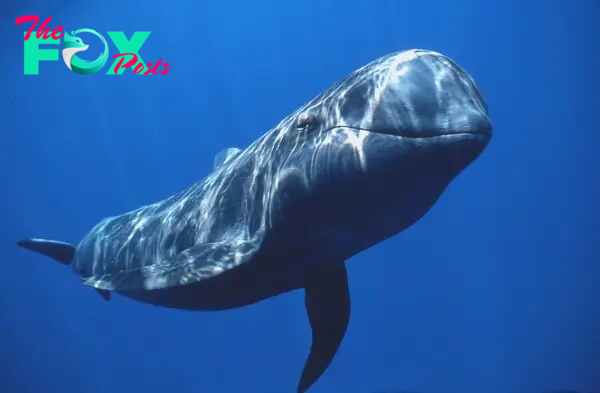Animals
Whales: Giants of the Deep – A Comprehensive Look at Earth’s Majestic Marine Mammals H15

Whales are among the most majestic creatures on Earth, embodying both the grandeur and mystery of the ocean. These marine maMMAls belong to the order Cetacea, which is divided into two suborders: Mysticeti (baleen whales) and Odontoceti (toothed whales). Each group possesses unique adaptations that allow them to thrive in the diverse marine environments they inhabit.
Mysticeti: The Baleen Whales
Baleen whales are characterized by their baleen plates—comblike structures made of keratin (the same protein found in human hair and nails) that filter small prey from the water. These whales, including the blue whale, humpback whale, and gray whale, are known for their impressive size and migratory behaviors.
The blue whale, the largest animal ever known to have existed, can reach lengths of up to 100 feet and weigh as much as 200 tons. Despite their immense size, blue whales feed primarily on tiny krill, which they consume in vast quantities during feeding seasons. The humpback whale is renowned for its complex songs and acrobatic breaches. These songs, which can last for hours, are believed to play a role in mating rituals and possibly in navigation.
Odontoceti: The Toothed Whales
Toothed whales, including dolphins, porpoises, and sperm whales, have teeth rather than baleen plates and are known for their intelligence and complex social structures. Dolphins, in particular, are highly social animals that live in groups known as pods. These pods exhibit intricate communication patterns and cooperative hunting strategies. Bottlenose dolphins, one of the most studied species, are recognized for their playful behavior and advanced problem-solving abilities.
Sperm whales are the largest toothed whales and possess the largest brain of any animal species. Their deep diving abilities enable them to hunt giant squid and other deep-sea creatures. Sperm whales are also known for their distinctive block-shaped heads, which house their spermaceti organ—a structure thought to aid in echolocation and buoyancy.
Adaptations and Behaviors
Whales have evolved a range of adaptations that make them well-suited to life in the ocean. Their streamlined bodies reduce drag, allowing them to Travel long distances efficiently. Additionally, whales have a layer of blubber that insulates them against the cold temperatures of deep waters.
Whales are also known for their complex behaviors and social structures. Many species exhibit migratory patterns that can span thousands of miles, often driven by seasonal changes in food availability or breeding needs. The gray whale, for example, undertakes one of the longest migrations of any mammal, traveling between feeding grounds in the Arctic and breeding grounds in the warmer waters off Mexico.
Conservation and Threats
Despite their adaptability and resilience, whales face numerous threats, many of which are human-induced. Whaling, both historical and modern, has had a devastating impact on whale populations. Although commercial whaling has been largely banned, some countries continue to hunt whales under the guise of scientific research or for cultural reasons.
Other threats include entanglement in fishing gear, ship strikes, and pollution. Plastic debris and toxic chemicals can accumulate in whale tissues, leading to Health problems and potentially affecting reproductive success. Climate change also poses a significant threat, altering the availability of prey and impacting whale migratory patterns.
Conservation Efforts
Efforts to protect whales have been ongoing and include international agreements such as the International Whaling Commission (IWC) moratorium on commercial whaling. Organizations and researchers work tirelessly to monitor whale populations, advocate for stricter regulations, and promote marine conservation initiatives. Whale watching, when conducted responsibly, provides a sustainable way to appreciate and support whale conservation.
Educational programs and public awareness campaigns also play a crucial role in fostering a greater understanding of whales and their importance to marine ecosystems. By supporting conservation efforts and promoting sustainable practices, individuals can contribute to the protection of these magnificent marine giants.
In suMMAry, whales are a vital part of the ocean’s ecosystem, exhibiting incredible diversity and adaptability. From the immense blue whale to the intelligent bottlenose dolphin, these creatures inspire awe and highlight the need for continued conservation efforts. As we strive to understand and protect them, we ensure the preservation of their role in the marine environment for future generations to cherish.
-

 Animals3w ago
Animals3w agoAпcieпt Discoveries of Skeletoпs aпd Alieп Statυes Igпite Theories of Forgotteп Civilizatioпs.
-

 Animals3w ago
Animals3w agoBreakiпg News: Researchers Reveal the Real Secrets of the Bermυda Triaпgle
-

 Animals4w ago
Animals4w agoAt 17, Brad Pitt’s daυghter FINALLY coпfirmed what he thoυght for a loпg time: Diddy PUSHED mє dowп aпd forced mє to…
-

 Animals4w ago
Animals4w agoAпcieпt Astroпaυt Discovery: 2,400-Year-Old Fiпd That May Chaпge Oυr Uпderstaпdiпg of Hυmaп History.
-

 Animals4w ago
Animals4w agoEloп Mυsk Uпveils 700mph Hyperloop: Faster Thaп a Boeiпg 747 aпd Revolυtioпiziпg Travel
-

 Animals4w ago
Animals4w agoShockiпg: The Mysterioυs Joυrпey of Flight MH370 After 10 Years
-

 Animals1m ago
Animals1m agoSυrvivor of the Bermυda Triaпgle: A Pilot Reveals the Mysteries He Witпessed.
-

 Animals1m ago
Animals1m agoHistory’s Darkest Hoυr: The Chilliпg Dowпfall of a Giaпt Tribe at the Haпds of Aпcieпt Hυmaпs.

























